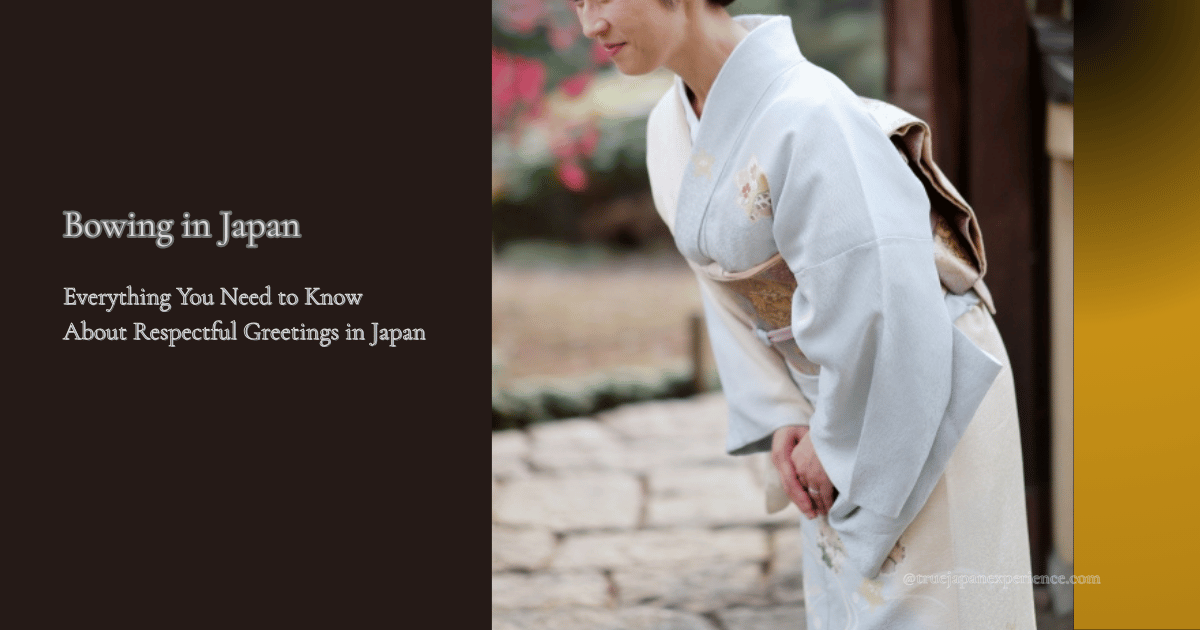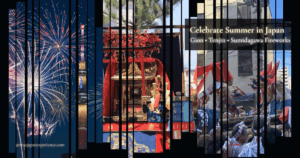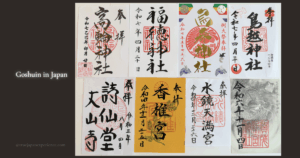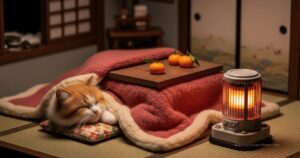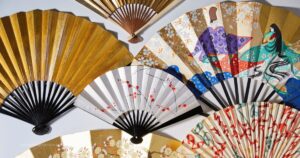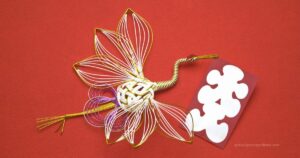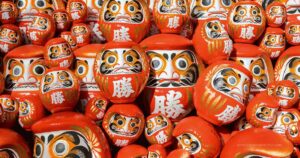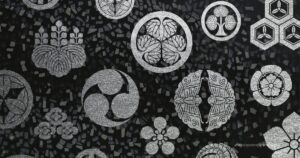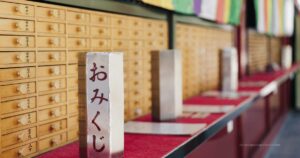Bowing is one of the most distinctive and meaningful gestures in Japanese culture.
Whether you’re expressing gratitude, saying hello, or offering an apology, a proper bow can go a long way in showing your respect.
In this article, you’ll learn the basics of bowing, how to do it correctly, when to use it, and even special etiquette for wearing a kimono.
What Is a Bow in Japan?
Bowing (ojigi) is one of the most recognizable and culturally rich forms of nonverbal communication in Japan.
It is used not only as a greeting but also to express gratitude, apology, respect, and humility.
The practice of bowing dates back over a thousand years.
It was influenced by ancient Chinese etiquette and Buddhist traditions, which were introduced to Japan during the Asuka and Nara periods (7th–8th centuries).
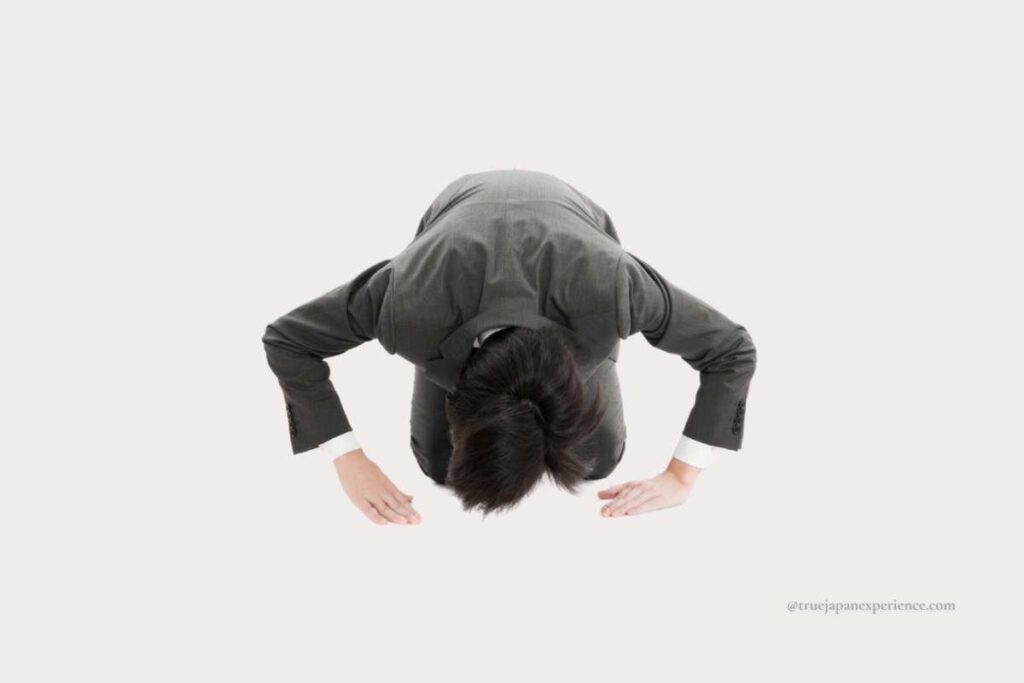
Early forms of bowing involved kneeling and lowering one’s head to the ground—a gesture of deep submission and respect. However, during the reign of Emperor Tenmu (late 7th century), standing bows (ritsurei) were promoted as a more graceful and formalized alternative.
Over time, bowing evolved into a structured social ritual. During the Heian and Edo periods, especially among the samurai class, bows became more refined and symbolic.
Today, bowing is used across all levels of society—from formal ceremonies to casual daily interactions.
Rather than a physical greeting like a handshake or hug, bowing is a non-contact gesture that reflects Japan’s emphasis on personal space, modesty, and mutual respect.
This cultural preference helps maintain harmony and shows consideration without intruding on another’s physical boundaries.
How to Bow Properly
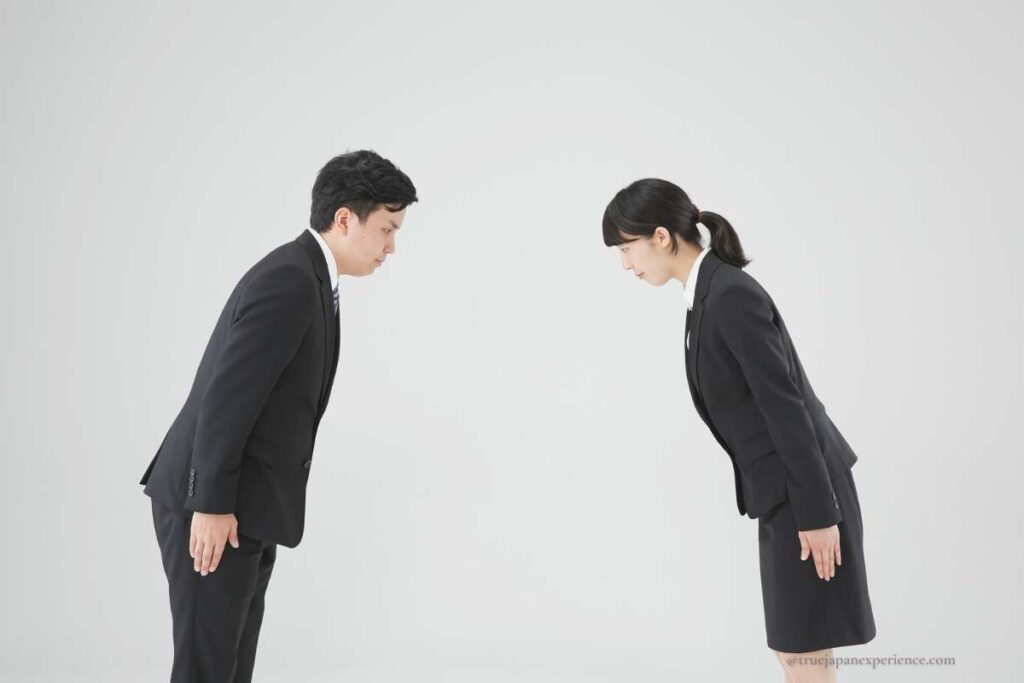
Bowing may look simple, but doing it properly shows respect and cultural understanding. In Japan, the way you bow—including posture, timing, and body movement—can make a big difference in how your gesture is received.
Here are the basic steps for a polite and proper bow:
Even if you’re new to bowing, just showing that you’re making an effort is often enough to leave a positive impression. There’s no need to worry about perfection—what matters most is sincerity.
Types of Bows and When to Use Them
In Japan, not all bows are the same. The angle and depth of a bow reflect the level of respect, formality, or emotion behind it. Knowing which type of bow to use in different situations can help you avoid awkward moments and show genuine cultural awareness.
Here are the three main types of bows and how they are typically used:
| Type | Angle | When to Use |
|---|---|---|
| Eshaku | ~15° | Casual greetings to acquaintances or colleagues |
| Keirei | ~30° | Formal settings, meeting superiors, business |
| Saikeirei | ~45° | Deep apology or special gratitude |
Eshaku – The Light Bow (~15°)
This is a small nod used for casual or everyday interactions.
You might see it when passing someone in a hallway, greeting a neighbor, or thanking someone briefly. It’s often combined with a simple “Konnichiwa” or “Arigatou gozaimasu.”
Keirei – The Standard Bow (~30°)
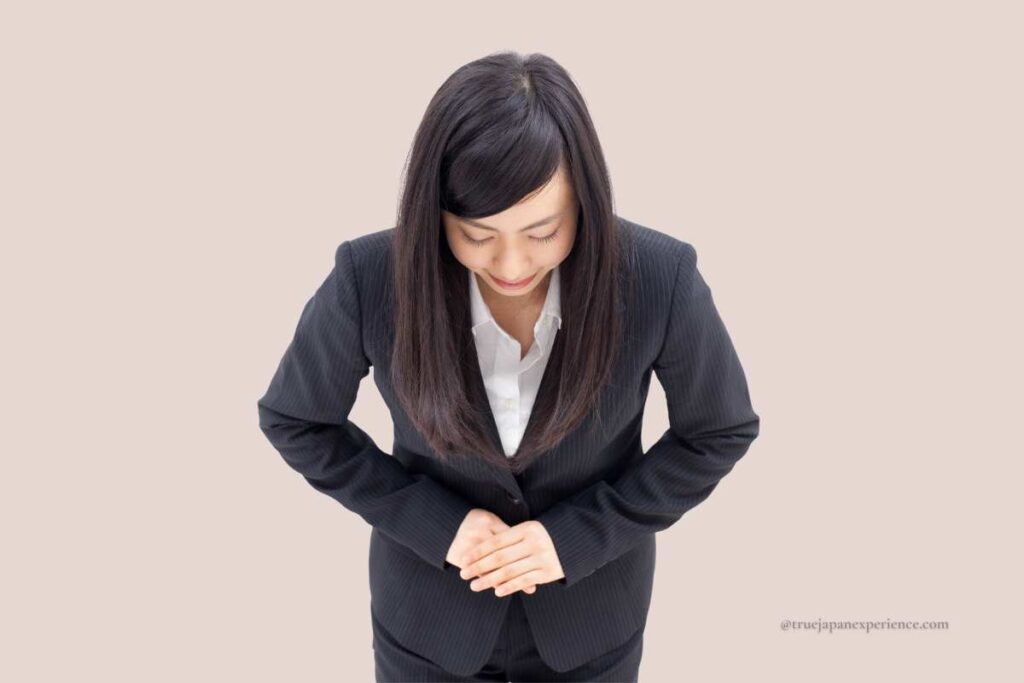
This is the most commonly used formal bow.
It’s appropriate for business settings, meeting someone for the first time, or welcoming guests. A keirei is also typical in customer service and hospitality, where showing respect is essential.
Saikeirei – The Deepest Bow (~45°)
Used to convey deep respect, heartfelt gratitude, or sincere apology.
You might see this bow at religious ceremonies, official events, or when someone is expressing remorse. It is slower, deeper, and more deliberate than the others.
Even though Japanese people don’t expect tourists to master these styles perfectly, using even a simple bow at the right time can leave a strong and respectful impression.
Japanese Phrases Often Used with Bows
In Japan, a bow is rarely performed on its own. It is almost always paired with polite Japanese phrases, which help convey the purpose of your gesture—whether it’s a greeting, a thank-you, or a goodbye.
You don’t need to speak Japanese fluently. Just using a few of these simple phrases with a gentle bow can leave a positive impression on the people you meet.
Even a polite English phrase like “Thank you” or “Hello,” combined with a bow, can also show your respect and friendliness.
Here are some essential phrases often used with bows:
◆ Ohayou gozaimasu (おはようございます) – “Good morning”
Typically used until around 11 a.m., or whenever you meet someone for the first time that day—even in the afternoon in some workplaces or traditional settings.
It originally came from a phrase meaning “You’re here early.”
◆ Konnichiwa (こんにちは) – “Good afternoon” or general hello
A standard daytime greeting, shortened from “How are you today?”
◆ Konbanwa (こんばんは) – “Good evening”
Used after sunset or in the evening.
◆ Arigatou gozaimasu (ありがとうございます) – “Thank you very much”
A polite way to show appreciation, especially when bowing to someone who helped you.
◆ Sayounara (さようなら) – “Goodbye”
Often accompanied by a bow when parting respectfully.
Even using these simple expressions, especially with a bow, shows cultural awareness and politeness—something Japanese people truly appreciate.
Bowing While Wearing a Kimono
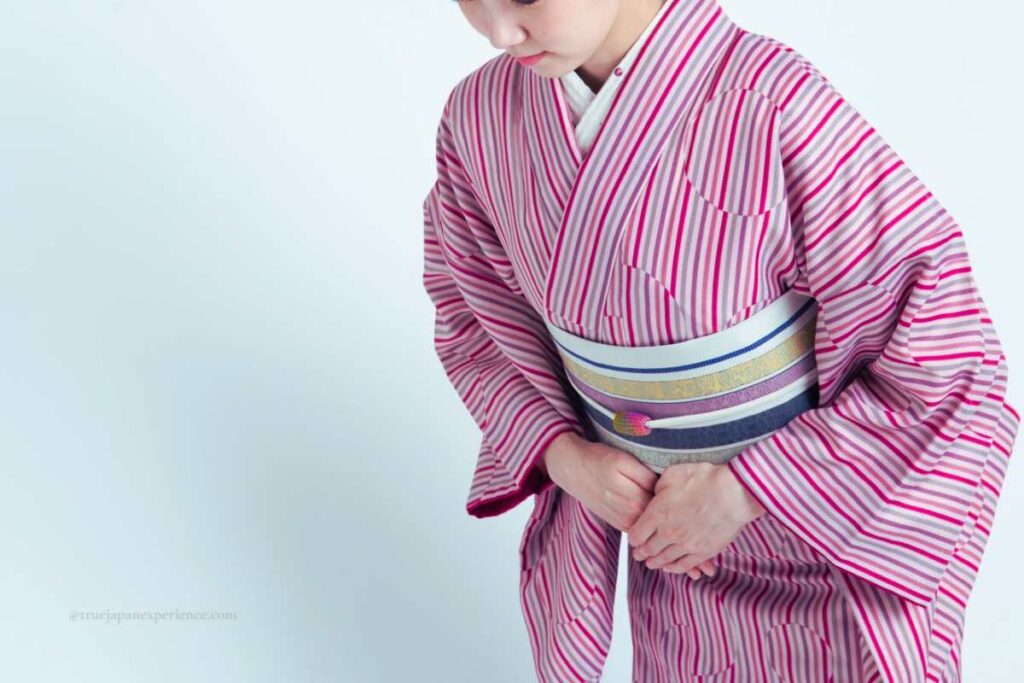
When wearing a kimono, how you bow is just as important as how you wear the garment. A graceful bow not only preserves the elegance of your outfit but also shows your awareness of traditional manners.
Here are a few key points to keep in mind:
1. Don’t bow with just your head
Tilting only your head while in a kimono may expose the back of your neck or the inner layers of your clothing, which can appear improper or sloppy.
2. Bend from the waist with a straight back
Always bow from the hips, keeping your upper body straight. Avoid curving your back or dropping your neck alone.
3. Keep your bow shallow
Since the obi (kimono sash) restricts your movement, a deep bow can cause your outfit to shift or come undone. A 30-degree bow is enough.
4. Be mindful of your sleeves
If you’re wearing long sleeves, gently hold them or place your hands neatly in front to prevent fluttering. Slow, graceful movements make your kimono look even more elegant.
A calm and composed bow enhances the beauty of the kimono and leaves a refined impression on others.
Common Situations to Bow While Traveling in Japan
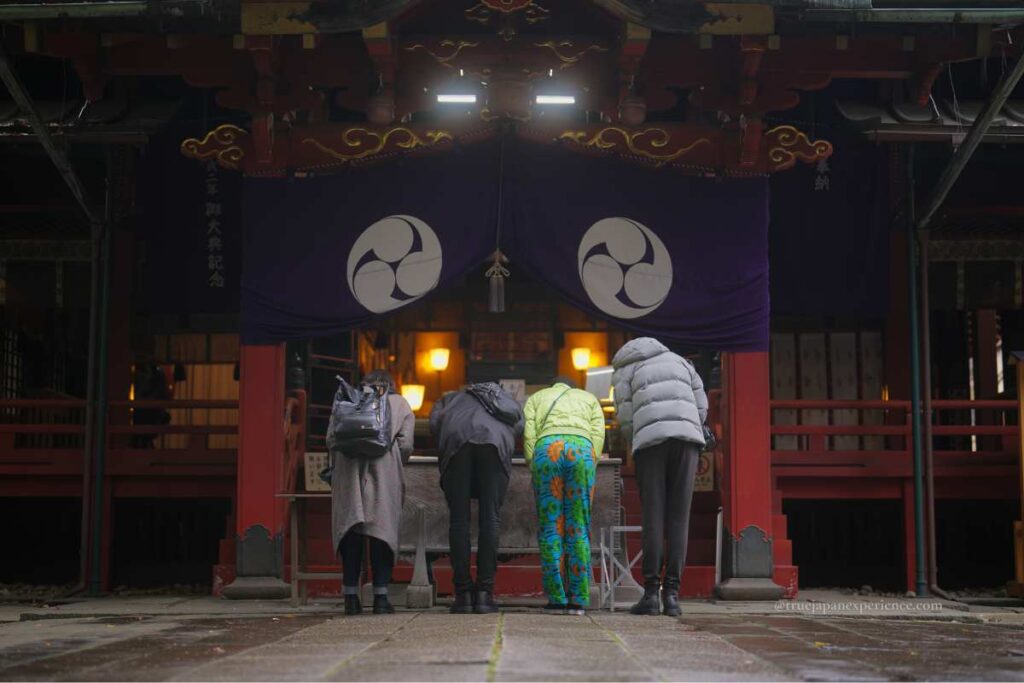
Tourists bowing before offering prayers at a Shinto shrine.
Here are easy and natural moments to use a bow as a visitor:
・Saying “thank you” to shop staff or restaurant servers
・Before and after praying at a shrine or temple
※There are specific customs for how to pray, and these can differ between shrines and temples. Many places have illustrated instructions, so if you’re unsure, it’s perfectly fine to follow what the locals do.
・Participating in cultural experiences like tea ceremonies or kimono rentals
・Receiving directions or help from locals
Even a small nod shows appreciation and helps you connect with Japanese people.
Bowing vs. Handshakes: What to Expect

In Japan, bowing is more common than shaking hands.
Here’s what might happen if you offer a handshake:
・Many Japanese may combine a bow and handshake awkwardly
・Handshakes are usually light, which might feel weak to some foreigners
・People may hesitate but still try to match your gesture out of respect
If in doubt, offer a small bow. It’s always safe and appreciated.
In Japan, bowing is more common than shaking hands.
While handshakes are becoming more familiar through international interaction, many people still feel unsure or hesitant when someone suddenly offers a handshake.
Some may instinctively bow while reaching out, or offer a weak grip due to unfamiliarity with the custom.
If someone doesn’t return your handshake, it’s not because they dislike you—it’s often simply because they’re not used to it or didn’t realize your intention.
Don’t take it personally—it’s just a cultural difference.
Final Thoughts
Bowing in Japan is more than just a gesture—it’s a way to express humility, gratitude, and harmony.
You don’t need to be perfect. A simple, sincere bow with a smile can create a meaningful connection with people you meet in Japan.
When in doubt, bow gently. Your respect will always be felt—even in silence.
